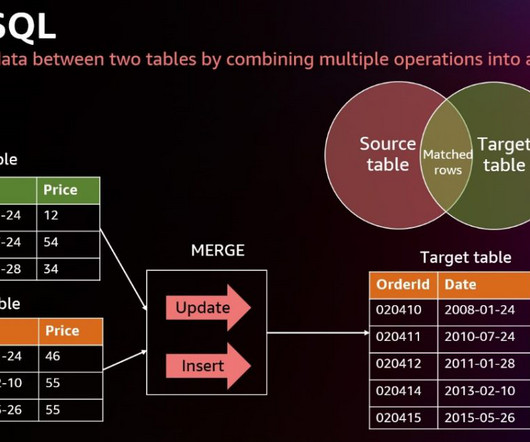Use the new SQL commands MERGE and QUALIFY to implement and validate change data capture in Amazon Redshift
AWS Big Data
SEPTEMBER 22, 2023
Tens of thousands of customers use Amazon Redshift to process exabytes of data every day to power their analytics workloads. When using multiple statements to update or insert data, there is a risk of inconsistencies between the different operations. Amazon Redshift has recently added many SQL commands and expressions.













Let's personalize your content